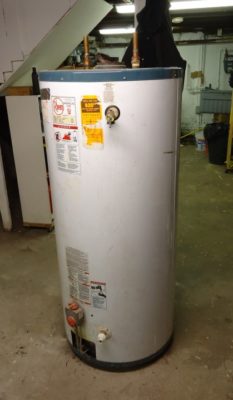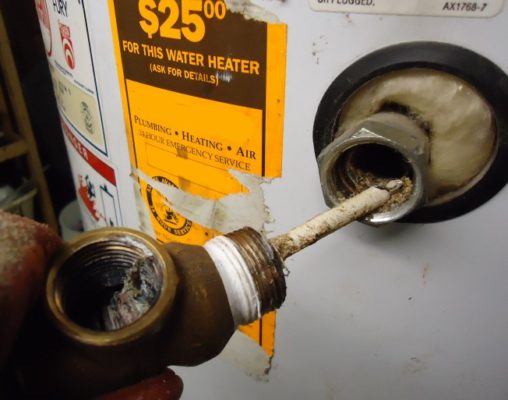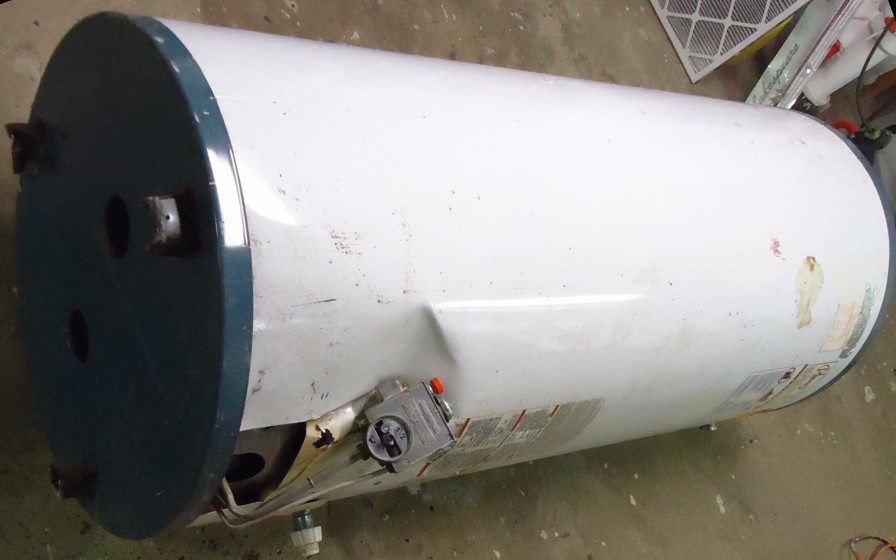Hot Water Heater, Heating, Tips
How Many Years Does A Hot Water Heater Last?
A home is dependent on the water heater. Think about cold showers, washing the floors with freezing water, and there being no hot water for the dishes. These unpleasant scenarios are why you need to keep your hot water tank in working order!
A water heater that is properly installed and maintained should last up to 12 years; a tankless heating system should last up to 20. They don’t usually work longer than that lifespan because of the natural sediment that flows in through the municipal system. While both tank and tankless water heaters have ways of dealing with this sediment, these protective measures will eventually break down.
What Causes Hot Water Heater Breakdowns?
 Like every other appliance, water heater tank wears down through constant use. As natural particles in water move through the system, they break the glass that lines the inside to protect the metal. The glass is very thin, so to keep the tank from corroding sooner than it has to, a device known as an anode rod attracts particles and keeps them from circulating in the water. You can often see the rod’s hexagonal head at the top of your tank.
Like every other appliance, water heater tank wears down through constant use. As natural particles in water move through the system, they break the glass that lines the inside to protect the metal. The glass is very thin, so to keep the tank from corroding sooner than it has to, a device known as an anode rod attracts particles and keeps them from circulating in the water. You can often see the rod’s hexagonal head at the top of your tank.
The anode rod is made from magnesium, aluminum, or an aluminum/zinc alloy. The rod attracts particles of corrosive material through electrolysis, taking them out of circulation. Eventually, the anode rod loses its effectiveness, and the lining will begin to corrode.
Sometimes, all the tank needs are for the anode rod to be replaced or for sediment to be flushed out. Whether or not it’s a fix or a replacement you need, one way you can prevent breakdowns from happening at inconvenient times is by knowing the signs of a tank at the end of its life!
Signs A Hot Water Heater Needs Replacing
To tell when your tank needs replacing, regularly check your tank and look for these signs:

- Banging Sounds: A clunking or banging sound coming from the tank is a sign of either sediment build-up or that the anode rod isn’t working (or both).
- Rusty Water: Discoloured water coming out of the tap when you turn on the hot water is a good sign that the inside of the tank is corroded. It could also mean that the tank needs to be flushed of sediment that has sunk to the bottom. Call a professional to diagnose the situation.
- Age: If a tank is over 12 years old, it may be time for a new model. To make assessing the age easier, note the purchase date in the manual. If you got the tank with a home purchase, check the information left to you by the previous owners. If you’re unsure of the answer, the serial number on the tank can help, but it’s always good to ask about the water heater’s age when looking at a home.
- Leaks: A leak is the most obvious sign that a tank needs replacing. If your water heater starts leaking, call a professional before it does any serious damage to your home. It’s very important to regularly check for leaks around the tank.
Regular inspections and attentiveness keep a tank going strong throughout its lifespan. Premier Heating and Cooling can offer you the solutions you need, and we can repair all makes and models of gas water heaters. Our team is fully licensed, insured, registered with TSSA, and covered by WSIB, so call us for any water heater needs!

